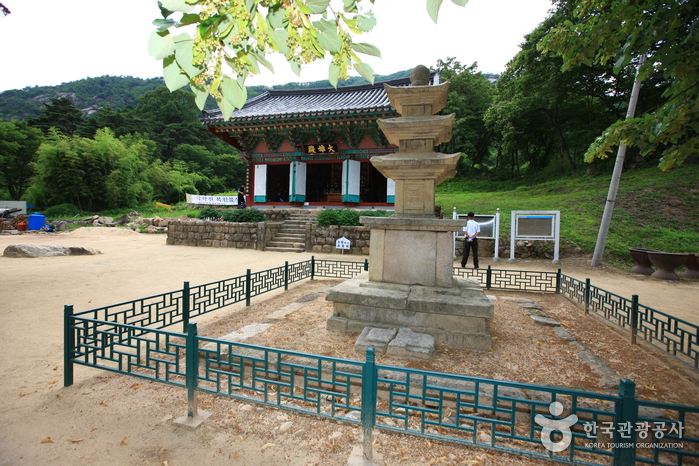Discover the Serenity of Yeongdong Yeongguksa Temple
If you’re looking to escape the hustle and bustle of city life and immerse yourself in the tranquility of nature, then a visit to Yeongdong Yeongguksa Temple is an absolute must. Nestled at the foot of Cheontaesan Mountain, this historic Buddhist temple offers visitors a chance to experience the beauty of South Korea’s natural landscape while exploring its rich cultural heritage.
A Journey Through Nature
To reach Yeongguksa Temple, visitors must embark on a scenic trek through a breathtaking valley, surrounded by lush greenery and the soothing sounds of waterfalls. As you make your way along the path, you’ll encounter picturesque rock formations, adding to the enchanting atmosphere of the journey. The refreshing air and peaceful ambiance make the hike an invigorating experience for both body and mind.
A Glimpse into History
Although the exact date of its construction remains unknown, it is believed that Yeongguksa Temple was built during the late Silla period, under the reign of King Seonjong. The temple flourished during the Goryeo period when the State Preceptor Wongak, a renowned figure in Buddhist history, completed the Cheontae Buddhist order here. Despite facing challenges during the Joseon era and the anti-Buddhist sentiments of the time, the temple managed to retain its reputation as one of South Korea’s notable temples.
In the early 20th century, Yeongguksa Temple faced the risk of closure. However, thanks to the dedicated efforts of Jubongjosa Monk, the temple was reconstructed in 1934, ensuring its preservation for future generations. Today, the temple stands as a testament to the resilience and enduring spirit of Korean Buddhism.
Treasures of Yeongguksa Temple
A visit to Yeongguksa Temple offers a chance to admire a plethora of treasures that are housed within its sacred grounds. Among these treasures, the Stele for State Preceptor Wongak stands as a testament to the temple’s historical significance. The Stupa of Yeongguksa Temple and the Three-story Stone Pagoda of Yeongguksa Temple are also notable highlights, showcasing the exquisite craftsmanship of the era.
Additionally, the temple is home to the Bell-shaped Stupa and Round-shaped Stupa, both of which are recognized as regional tangible cultural assets. These unique structures offer insight into the religious practices and artistic traditions of the past, allowing visitors to gain a deeper appreciation for South Korea’s rich cultural heritage.
Plan Your Visit
To fully experience the serenity and historical significance of Yeongdong Yeongguksa Temple, it is recommended to set aside a few hours for exploration. The temple is easily accessible via public transportation and offers ample parking facilities for those traveling by car.
Remember to dress comfortably and wear appropriate footwear, as you’ll be traversing natural terrain during your visit. Whether you’re seeking a moment of reflection, an opportunity to connect with nature, or a chance to delve into South Korea’s fascinating history, Yeongdong Yeongguksa Temple promises an unforgettable experience for all who venture here.

